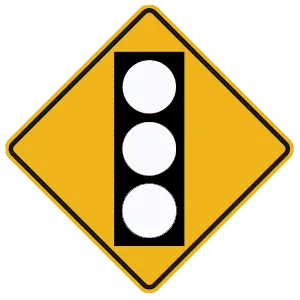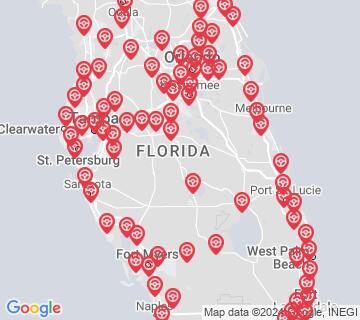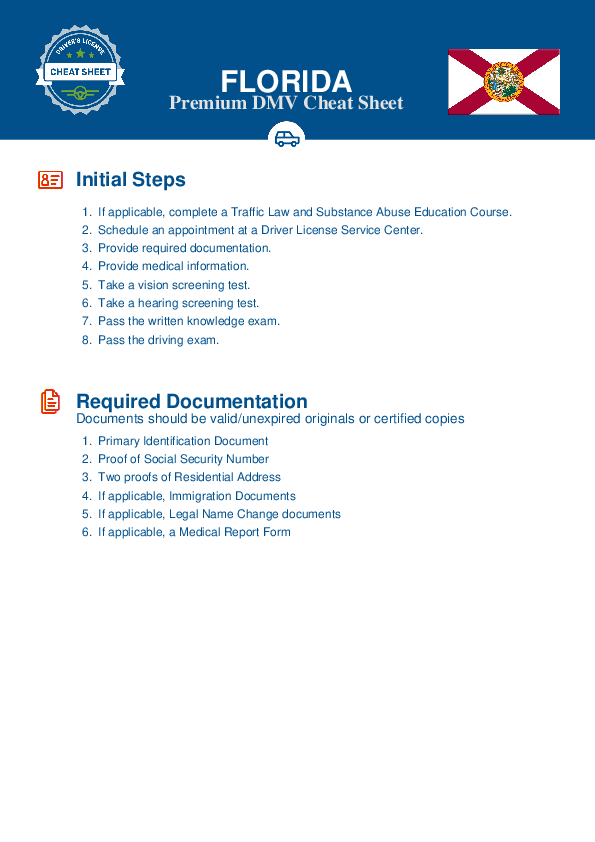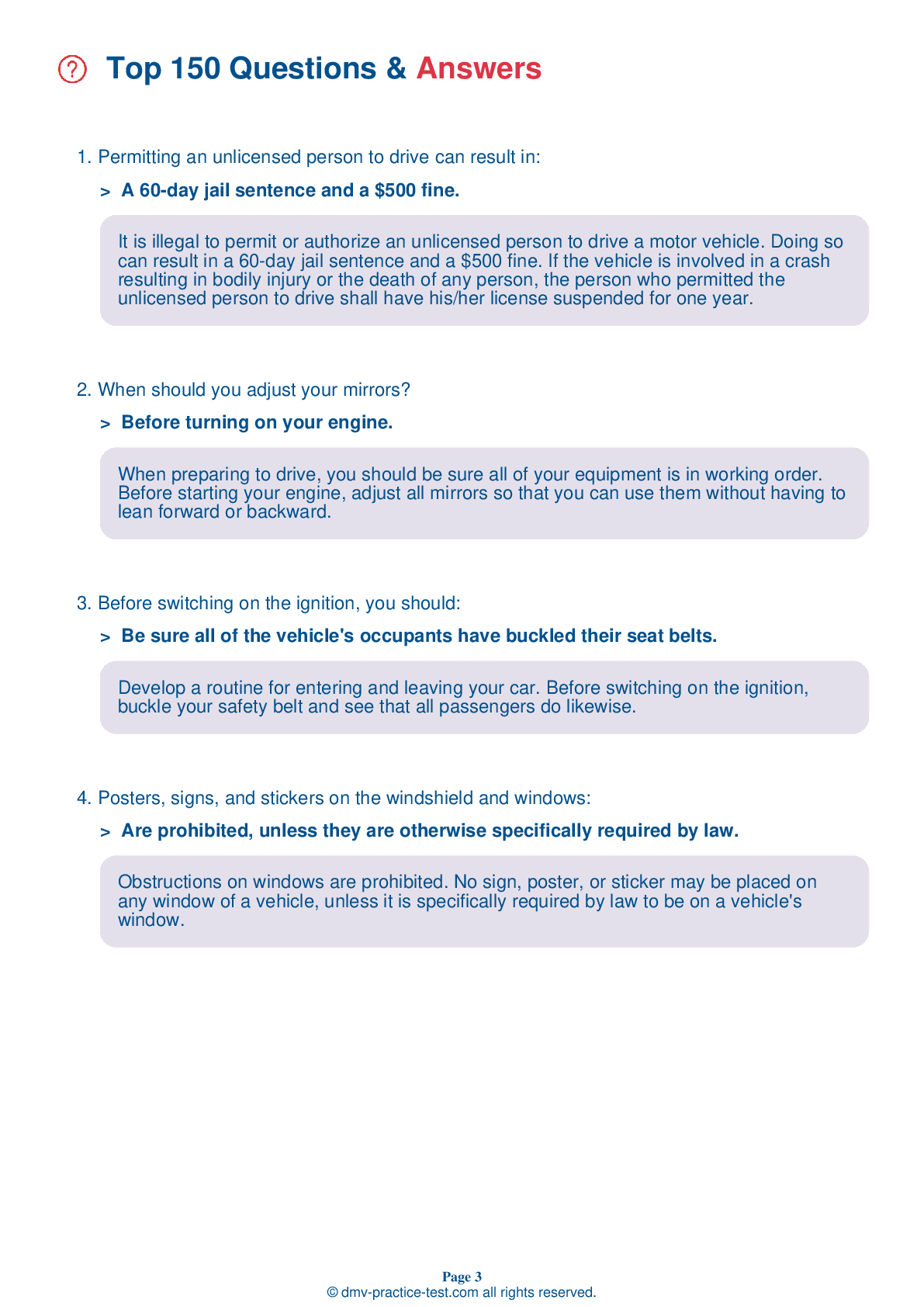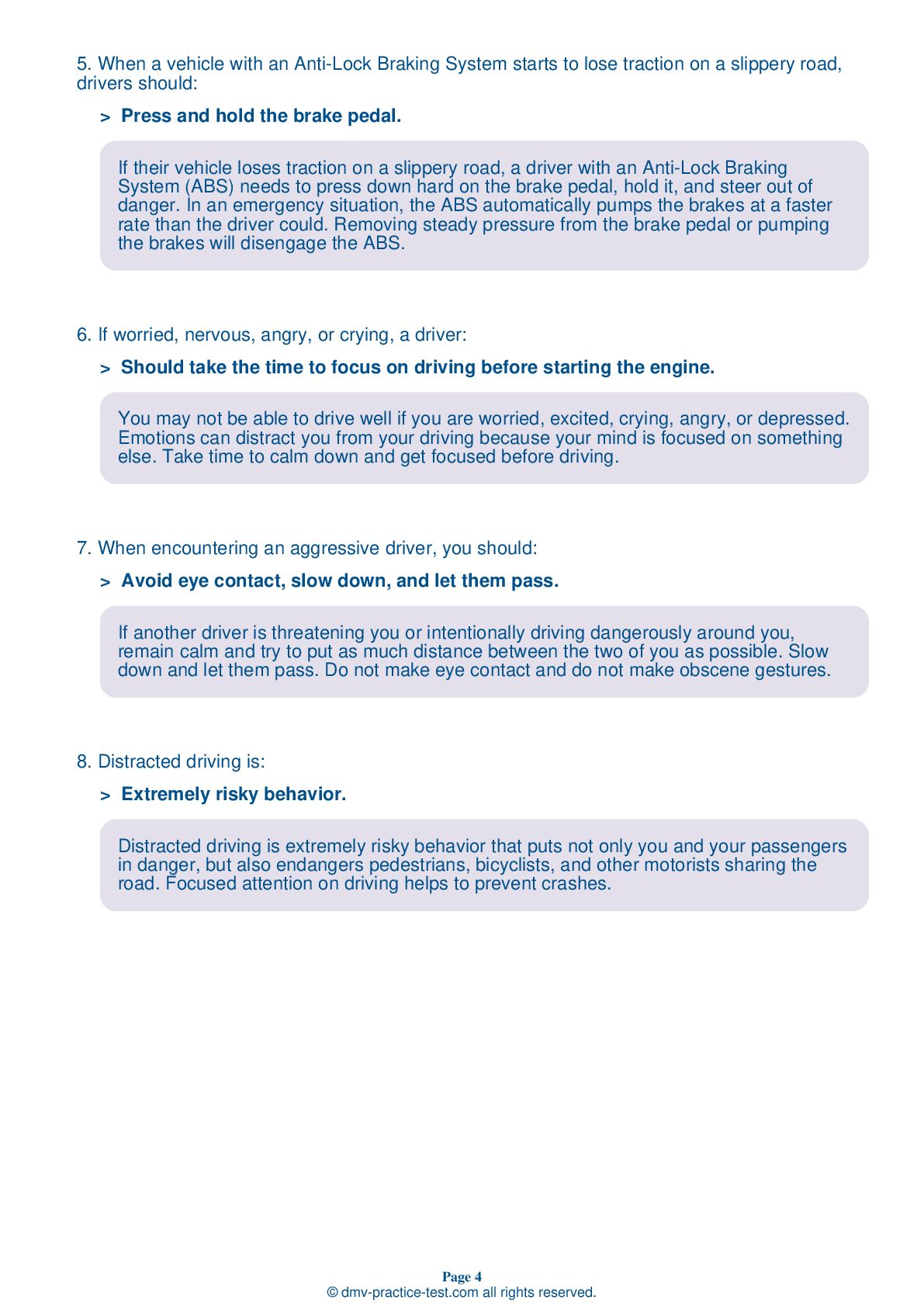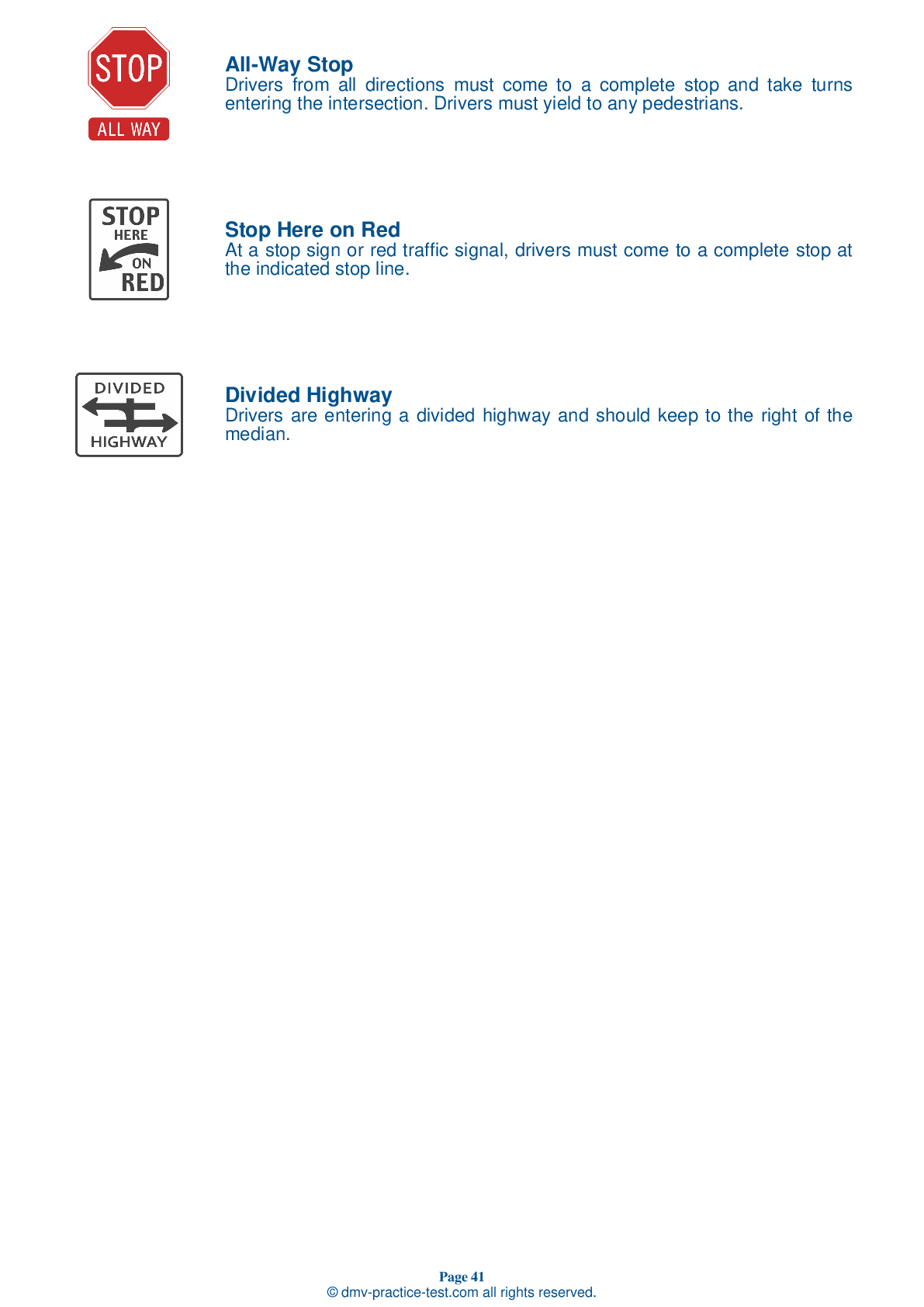FREE Florida DMV Practice Test #17 Page 7 of 7
This set of DMV practise tests for the Florida has been updated for January 2025. It includes questions based on the most important traffic signs and laws for 2025 from the Florida Driver Handbook. To study for the DMV driving permit test and driver's licence exam, use actual questions that are very similar (often identical!) to the DMV driving permit test and driver's licence exam.
Each question on the practise exam has a tip and explanation to help you recall the ideas. Questions about traffic rules, traffic signs, and driving statutes, as well as information from the Driver Handbook, will be included in the written portion of the official DMV test.
You must properly answer 40 of the 50 questions to receive the required passing mark. To help you prepare for your Florida instruction permit or driver's licence, take our DMV practise test.
The DMV exam is offered in a variety of languages.
Using any kind of testing assistance will result in an automatic fail, and the DMV may take additional action against your driver's licence, so stay away from it.
43 . You may legally drive 10 mph over the speed limit:
Speeding is against the law. You must obey the speed limit and you are responsible for knowing the speed limit when you are driving. The “speeding buffer” is a myth; you are not allowed to drive up to 10 mph over the speed limit.
44 . This sign means:
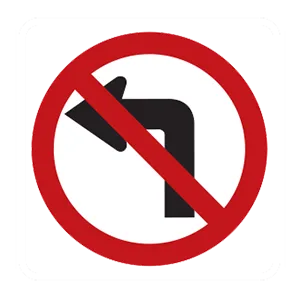
Regulation signs regulate traffic speed and movement, displaying rules which drivers must obey. This regulation sign means that left turns are prohibited.
45 . What do speed limit signs indicate?
Speed limit signs indicate the maximum or minimum safe speed that is allowed to be driven on a roadway. The maximum limits are for ideal conditions and you must reduce your speed when conditions require it.
46 . When making a turn, you must ____ your speed.
When turning, you should reduce to a speed that allows you to maintain control of your vehicle, stay in your lane, and react to unexpected situations.
47 . From top to bottom, the following is the proper order for traffic lights:
